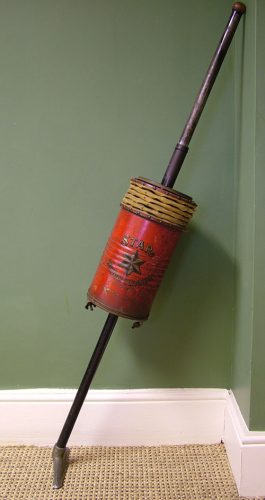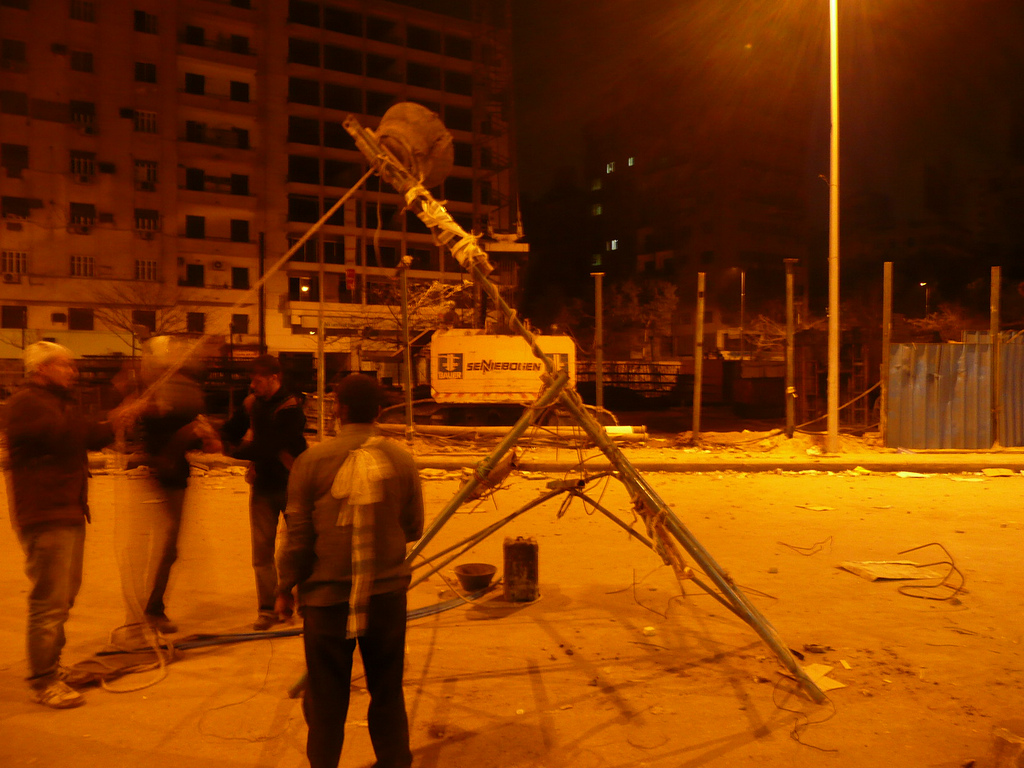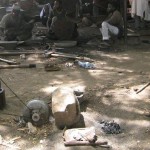“Bananas come in the perfect package already, a disposable, compostable skin that doubles as a handy banana holder and instigator of vaudeville humor. But that’s not good enough for Del Monte.”
The Receding Horizons of Renewable Energy
“Widespread installed renewable electricity capacity would be a very good resource to have available in an era of financial austerity at the peak of global oil production, but the mechanisms that have been chosen to achieve this are clearly problematic. They plug into, and depend on, a growth model that not longer functions. If we are going to work towards a future with greater reliance on renewable energy, there are a number of factors we must consider. These are not typically addressed in the simplistic subsidy programmes that are now running into trouble worldwide.
We have power systems built on a central station model, which assumes that we should build large power station distant from demand, on the grounds of economic efficiency, which favours large-scale installations. This really does not fit with the potential that renewable power offers. The central station model introduces a grid-dependence that renewable power should be able to avoid, revealing an often acute disparity between resource intensity, demand and grid capacity. Renewable power (used in the small-scale decentralized manner it is best suited for) should decrease grid dependence, but we employ it in such a way as to increase our vulnerability to socioeconomic complexity.
Renewable energy is best used in situ, adjacent to demand. It is best used in conjunction with a storage component which would insulate consumers from supply disruption, but Feed-In Tariff (FIT) programmes typically prohibit this explicitly. Generators are expected to sell all their production to the grid and buy back their own demand. This leaves them every bit as vulnerable to supply disruption as anyone who does not have their own generation capacity. This turns renewable generation into a personal money generating machine with critical vulnerabilities. It is no longer about the energy, which should be the focus of any pubicly funded energy programme.
FIT programmes typically remunerate a wealthy few who install renewables in private applications for their own benefit, and who may well have done so in the absence of public subsidies. If renewables are to do anything at all to help run our societies in the future, we need to move from publicly-funded private applications towards public applications benefitting the collective. We do not have an established model for this at present, and we do not have time to waste. Maximizing renewable energy penetration takes a lot of time and a lot of money, both of which will be in short supply in the near future. The inevitable global austerity measures are not going to make this task any easier.”
Modernising the Royal Mail
Rounds that used to take three and a half hours to complete are now taking up to five. Read. Thanks, Adrian.
Hand Operated Vacuum Cleaners
 “The easiest way to utilize pump vacuums (picture below, left) was to have two people operate them. One person would pump the vacuum while a second would use the hose and wand or tools to clean. A common sight was a daughter pumping the handle while mom did the cleaning. Most early vacuum cleaners were expensive for the time. The well-to-do often would purchase the cleaning contraptions to ease the workload of their servants or housekeepers.”
“The easiest way to utilize pump vacuums (picture below, left) was to have two people operate them. One person would pump the vacuum while a second would use the hose and wand or tools to clean. A common sight was a daughter pumping the handle while mom did the cleaning. Most early vacuum cleaners were expensive for the time. The well-to-do often would purchase the cleaning contraptions to ease the workload of their servants or housekeepers.”
“Bellows operated vacuums appeared in several styles and shapes. Some early vacuums utilized a single bellows. This made the cleaner less efficient because there was no suction as the bellows closed. Suction was produced only as air rushed into the bellows as it opened. To make the machines more useful, bellows were installed in pairs and offset to allow one to open while the other closed.” Picture right: a bellow-operated Star Vacuum Cleaner.
“In their day, wheel operated vacuums approached the cutting edge of early technology. They exhibited a sophistication that was not present in earlier vacuum designs. This style of machine provided powerful and continuous suction for its user. The increase in vacuum even allowed for larger diameter hoses and bigger cleaning tools. Typically, one person cranked the wheel while another cleaned with a wand or hand tool.”
“Friction vacuum cleaners are based on an ingenious concept conceived by James Kirby. They utilize the driving force of the rear wheels to power the cleaner. This style of vacuum derives its power when the operator pushes it across the floor. The wheels contact the floor and turn the axle. This energy is transferred to the fan via a worm gear during every forward motion of the machine. The front wheels are connected to a brush roller to create a sweeping action. These machines look like an early electric upright vacuum, but do not need electrical current to run. As a result, they have no electric motor, cord, plug, or switch. This makes them lightweight, quiet, and cost free to use. Friction vacuums were popular well into the 1940’s in communities where electricity was not available.”
More: VacHunter galleries. Thank you, Adriana.
Medieval Warfare in Egypt
The catapult seems to be en vogue these days. Following the drug catapult confiscated at the US-Mexican border ten days ago, here is a device used by the anti-government protesters at the Tahrir square in Egypt. Source: Al Jazeera. Via Liz McLellan.
The World’s First Post-Growth Economy
“One of the problems with the post-growth movement is that it can appear theoretical. No matter how confident we might be, we lack proof that a post-growth economy is possible. Or do we? Perhaps the world already has a post-growth society, albeit an unintentional one. Here’s what Japan’s GDP has been up to for the last twenty years.”
“As far as economists are concerned, this is a tragedy and a disaster. And yet, the lights are still on, everything still works. Literacy is high, and crime is low. Life expectancy is better than almost anywhere on earth – 82 years to the US’ 78. The trains run to the second. Unemployment is only 5%, and levels of inequality are enviable. So maybe Japan isn’t a failure. Maybe it’s just ahead of its time – not ‘stagnating’, but settling into the plateau of ‘enough’.” Read.






